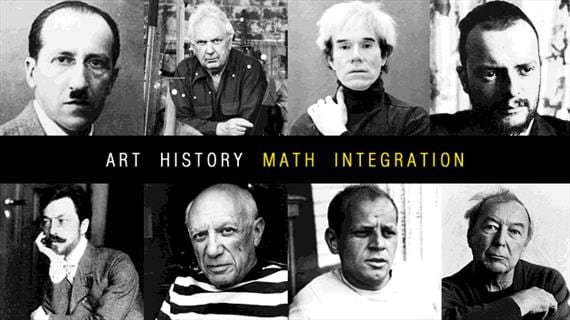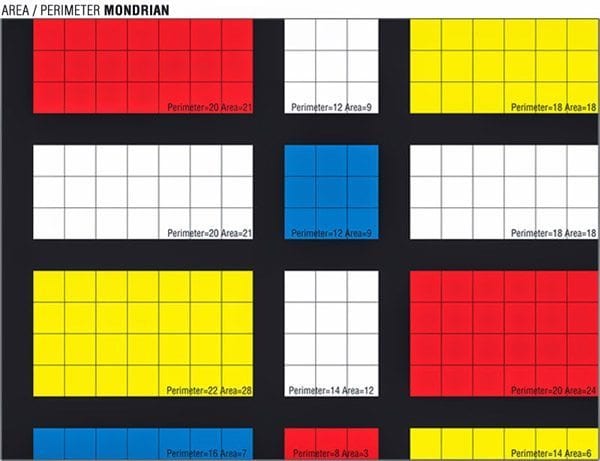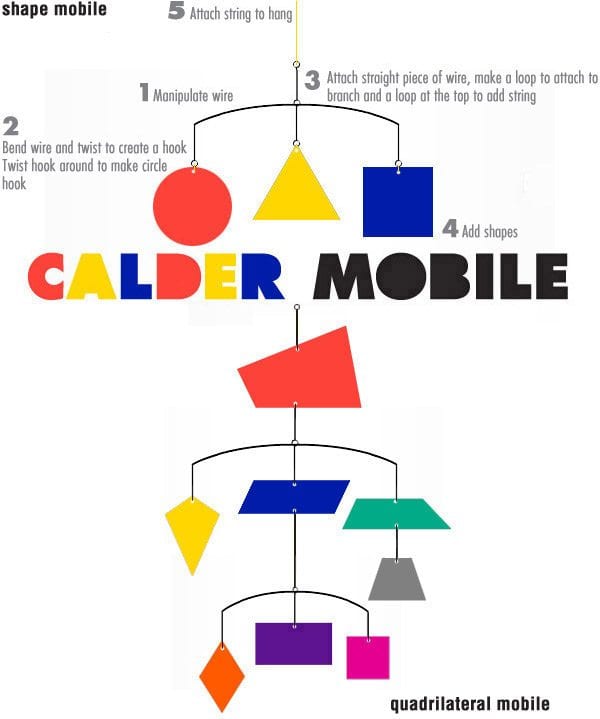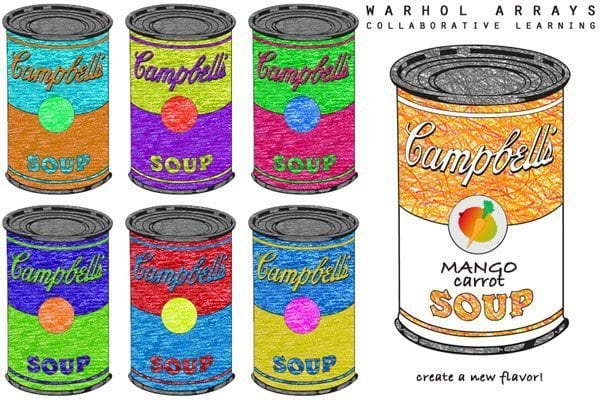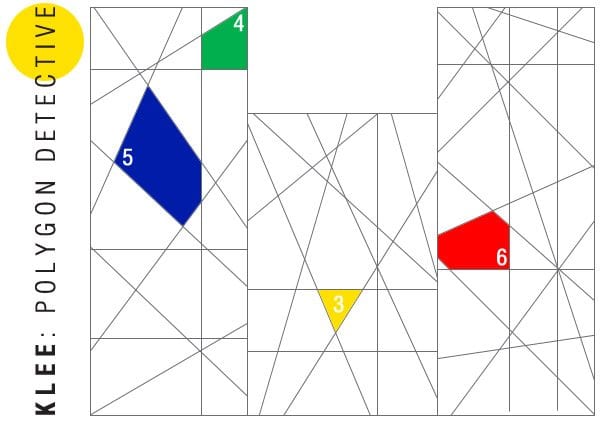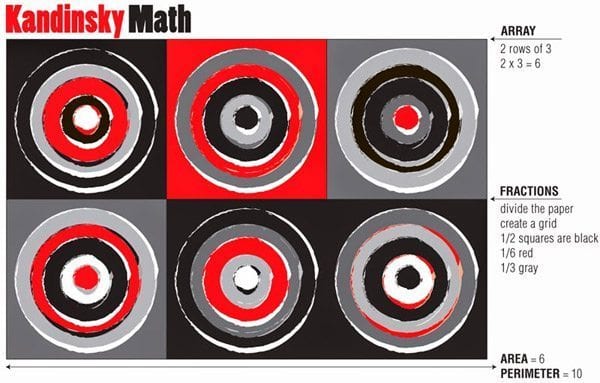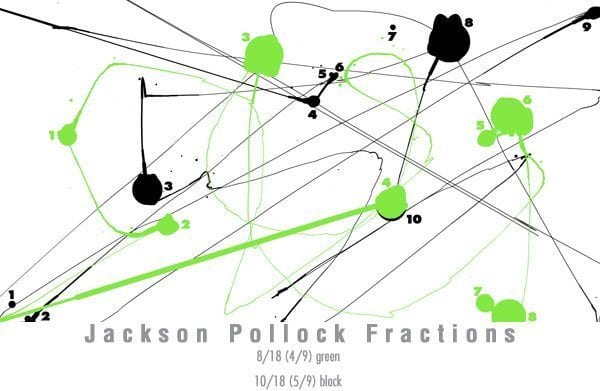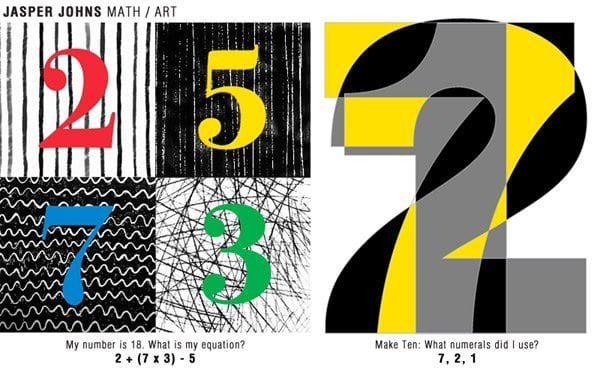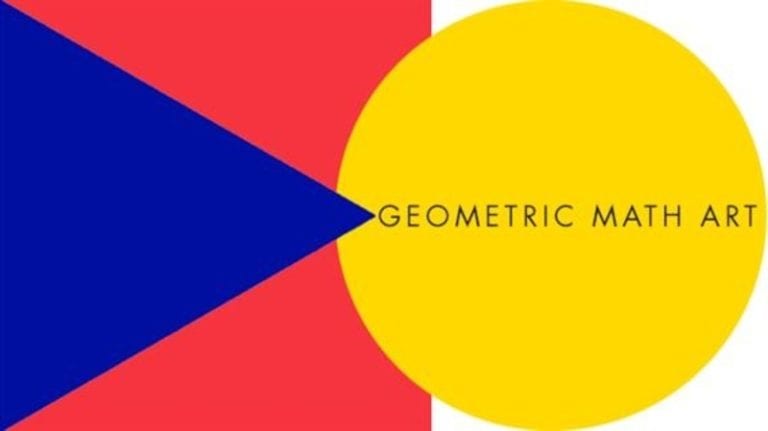Teach math with art! Students learn about famous artists while using their math skills.
Area Perimeter Mondrian
Combine art and math in this area/perimeter lesson, Piet Mondrian–style. Have kids lay out their artwork on grid paper (color in the squares). Next, have them figure out the area and perimeter of each “block,” using their black grid lines as their guide. Optional: Have students re-create their designs using construction paper.
Literature connection: Coppernickel Goes Mondrian (Artist Tribute) by Wouter van Reek
Alexander Calder Shape Mobiles
Students learn about geometric terms and basic shapes by creating hanging art. Students can create a quadrilateral family tree mobile, 3-D shape mobile or a mobile with various triangles, or hang geometry concepts to help further their understanding (such as: different angles or lines). Younger students can hang basic shapes that they are just learning to identify.
Science connection: Levers—can students find the center of balance? Students manipulate pre-cut stem wire (available in craft stores) to create “branches” (see image). Next, they cut geometric shapes out of construction paper, hole-punch their shapes and hook them on the mobile where they made loops. Then, they add string to the wire loop at the top to hang.
Literature connection: Sandy’s Circus: A Story About Alexander Calder by Tanya Lee Stone
To integrate English language arts, students can create a secret word with their Calder mobiles. Shapes represent letters. Students make up a code. Next, they create a mobile of shapes that has their secret word. Then, they have their peers try to figure out the word they came up with! Check out Salamander Art for details! This lesson works in conjunction with the book The Calder Game by Blue Balliett.
Warhol Arrays
Students collaborate and create a giant array of soup can art. Give each student one soup can template. They come up with a unique flavor, color it and cut it out. Next, working in small groups, students create three different arrays using their soup cans. They write down their multiplication equations and solutions for each array they created. Then, as a class, students create a giant display of all of their soup cans and figure out the multiplication equation and solution to their collaborative array artwork! To integrate writing, students write a persuasive letter to the Campbell’s Soup Company stating why their soup should be added to Campbell’s soup line.
Literature connection: Fabulous: A Portrait of Andy Warhol by Bonnie Christensen; Andy Warhol: Pop Art Painter by Susan Goldman Rubin
Klee: Polygon Detective
Inspired by Paul Klee’s Castle and Sun
Show students an image of the painting Castle and Sun. Have them point out different polygons that they see within the painting. Afterwards, give children construction paper and have them make their own castle. First, they lay out the outline of their castle by drawing rectangles. Next, they draw lines, using a ruler, within their rectangles to create polygons within the rectangular outlines. Then, they look for and color in polygons that have the same number of sides (see image). Have the students add a sun and display their beautiful artwork!
Literature connection: The Cat and the Bird: A Children’s Book Inspired by Paul Klee by Geraldine Elschner
Klee Math (Percentages and Area/Perimeter)
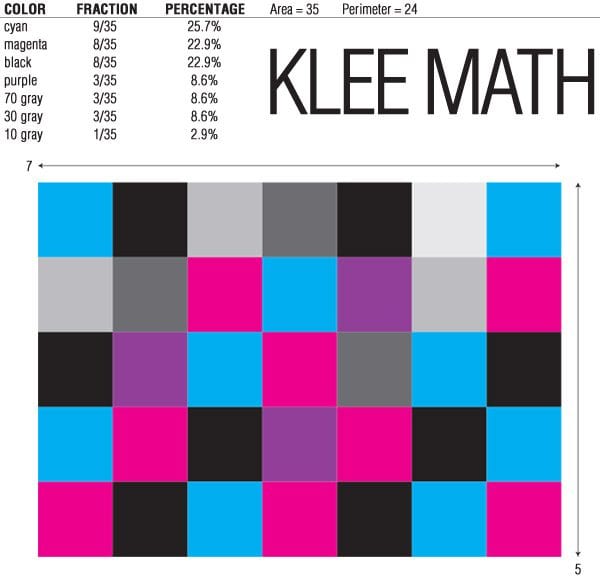
Inspired by Paul Klee’s art Farbtafel
Students design a checkerboard inspired by Paul Klee’s artwork Farbtafel. They measure and lay out their grid. Next, they come up with a color palette. Then, they figure out the fraction for each color they used and calculate the percentage of each color. They divide, multiply and round. Finally, they figure out the area and perimeter of their design.
Literature connection: Dreaming Pictures: Paul Klee (Adventures in Art (Prestel) by Paul Klee and Juergen von Schemm
Kandinsky Math
Inspired by Wassily Kandinsky’s art Squares With Concentric Circles
Fractions: Students create a grid and divide the paper, exploring unit fractions.
Multiplication: They create an array of concentric circles and write down their equation.
Area and perimeter: Each design is contained within a square unit. What is the area and perimeter of their entire design?
Fractions: They write down the fraction for the main color of each square.
Note: Older students could use a math compass to create perfect circles and figure out the circumference of each circle (geometry).
You could use any art medium for this project (paint, crayon-resist art with watercolor, oil pastels or markers).
Literature connection: The Noisy Paint Box: The Colors and Sounds of Kandinsky’s Abstract Art by Barb Rosenstock
Picasso Geometry and Fractions
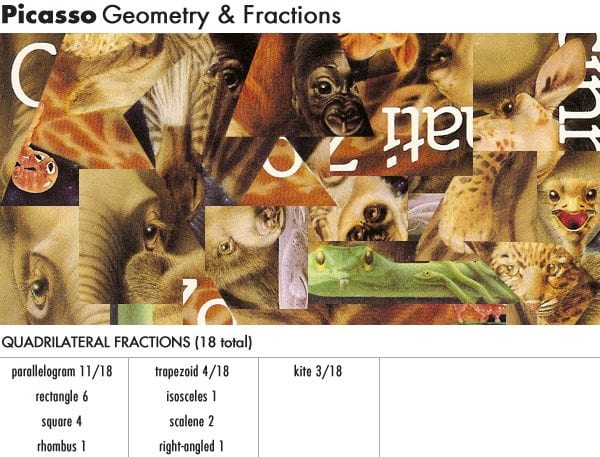
Inspired by Pablo Picasso’s art Violin and Grapes
Students create (draw by hand or digitally) or find an image (magazine or creative commons). Then, they cut it apart into different quadrilaterals. They classify what they cut out into groups: trapezoid, kite or parallelogram. Before moving on, the teacher checks their understanding of quadrilaterals. Next, the students write a fraction for each shape (see image above). Then, they create a piece of art inspired by Pablo Picasso’s Violin and Grapes. They rearrange the pieces to make an original piece of art.
Geometric Picasso Head
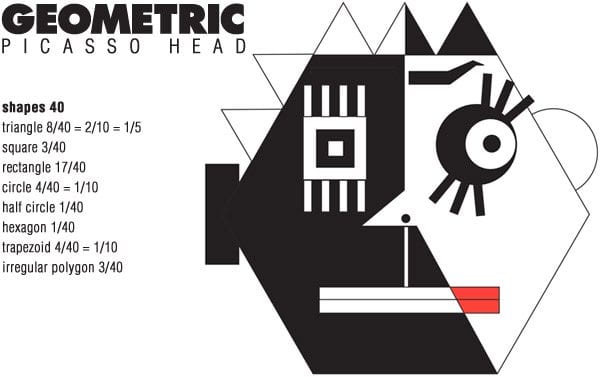
Inspired by Pablo Picasso’s art Two Characters
This lesson is inspired by Mrs. T’s First Grade Class shape lesson. Students create a Picasso face using geometric shapes. To add more of a challenge for older students, have students figure out the fraction for each shape they used.
Literature connection: Just Behave, Pablo Picasso! by Jonah Winter
Jackson Pollock Fractions
First, students use the Web 2.0 tool Manetas to create Pollock art. Then, they count the large drops of each color they made and figure out the fraction for each hue. After working on the computer (if you are brave enough!), bring the children outside to create Pollock art using paint in squeeze bottles on a large sheet of butcher paper. Have each student write down the fraction for how many large drops of each color they used on the paper. Then, as a class, figure out the fraction for the mural they made outside. Create a graph to help students calculate the cumulative fractions for each color.
Literature connection: Action Jackson by Jan Greenberg and Sandra Jordan
Jasper Johns Math/Art
1. “What’s Your Equation?” inspired by Jasper Johns’ art Numbers in Color
This lesson is inspired by Art in the Big Green Room. Students choose four meaningful numbers to them (ex: age, people in their family, pets, etc.). Next, they create a grid with their numbers in the center of each square. To add additional math to this lesson, have students create a math equation (using their four numbers) and solve it. Instruct students to hand off their design and magic number (solution) to a peer. Their peer has to try to figure out their equation!
2. “Make Ten” inspired by Jasper Johns’ art 0-9
This awesome lesson comes from MC2 (Feel the Energy). Students overlap three numbers (outline only) that add up to a certain sum. Since the painting is titled 0-9, I chose a sum of 10. Students can choose any three numbers for their equation to equal a sum of 10. They color in their design. Then, they hand it off to a peer. Can their peer figure out the three numbers used to make 10?!
Literature connection: Where Is Jasper Johns? (Adventures in Art [Prestel]) by Debra Pearlman
Erin Bittman is a student at the University of Cincinnati. She will be a student teacher in a multi-grade classroom in the fall (second and third grades). Check out her blog E Is for Explore!
